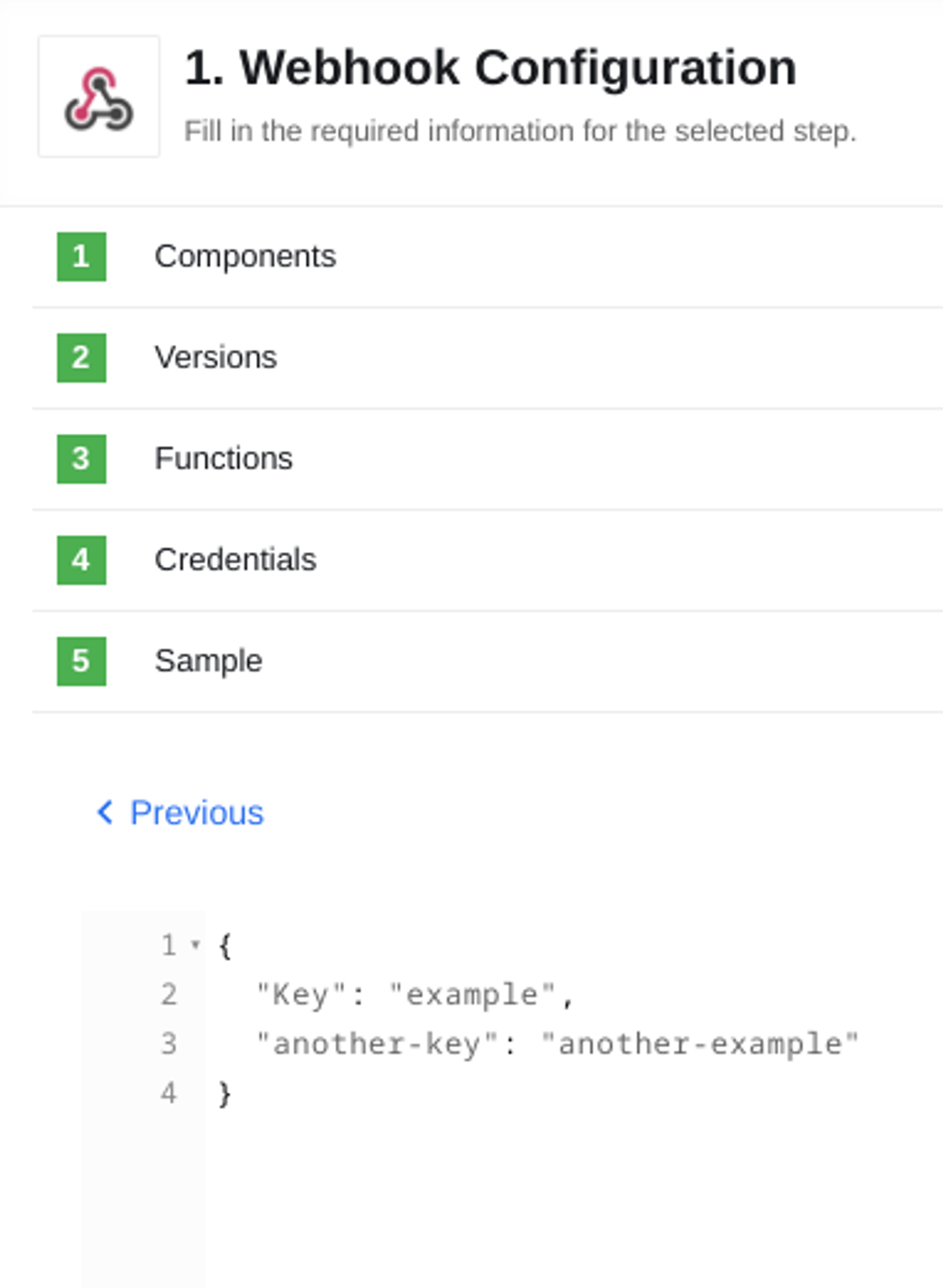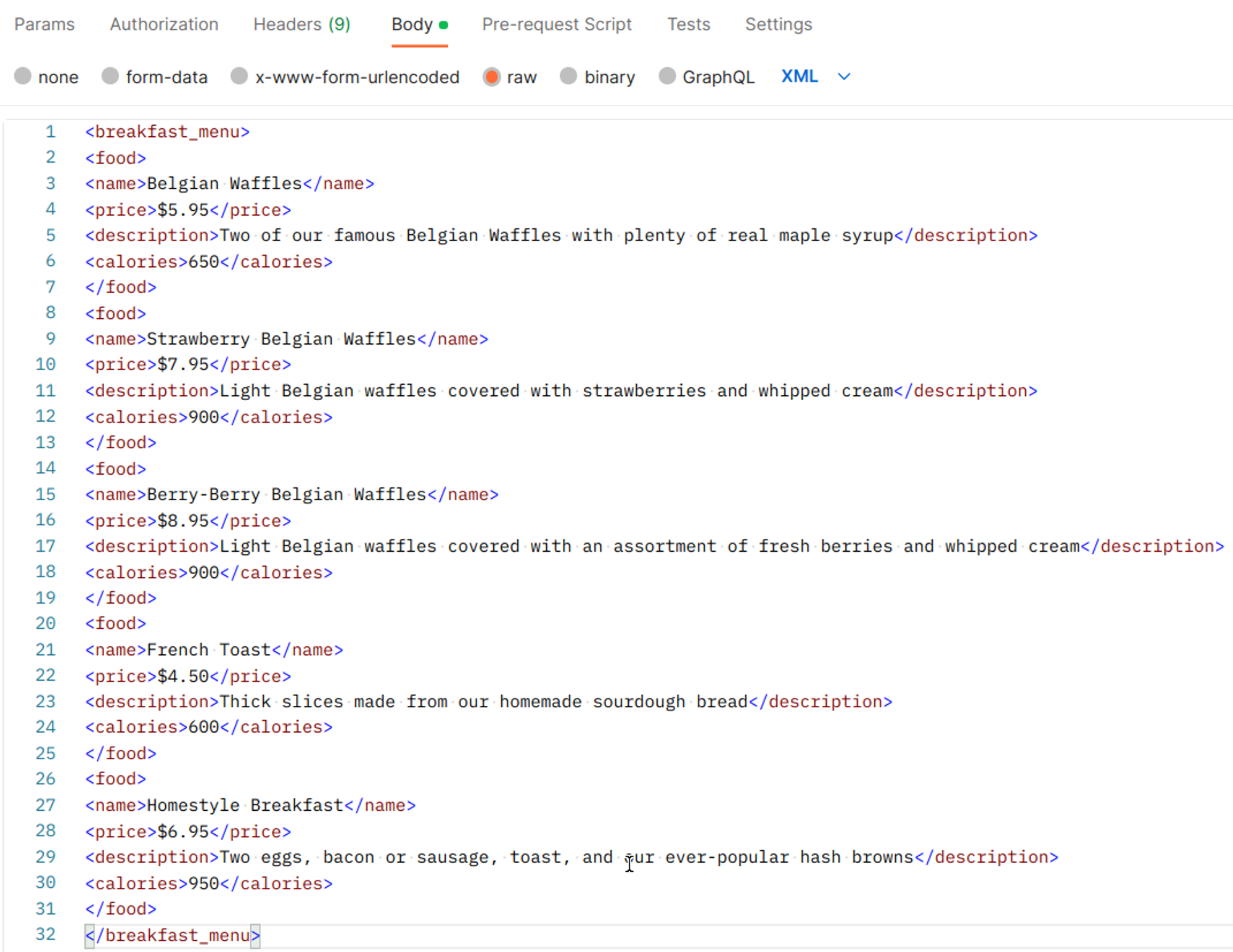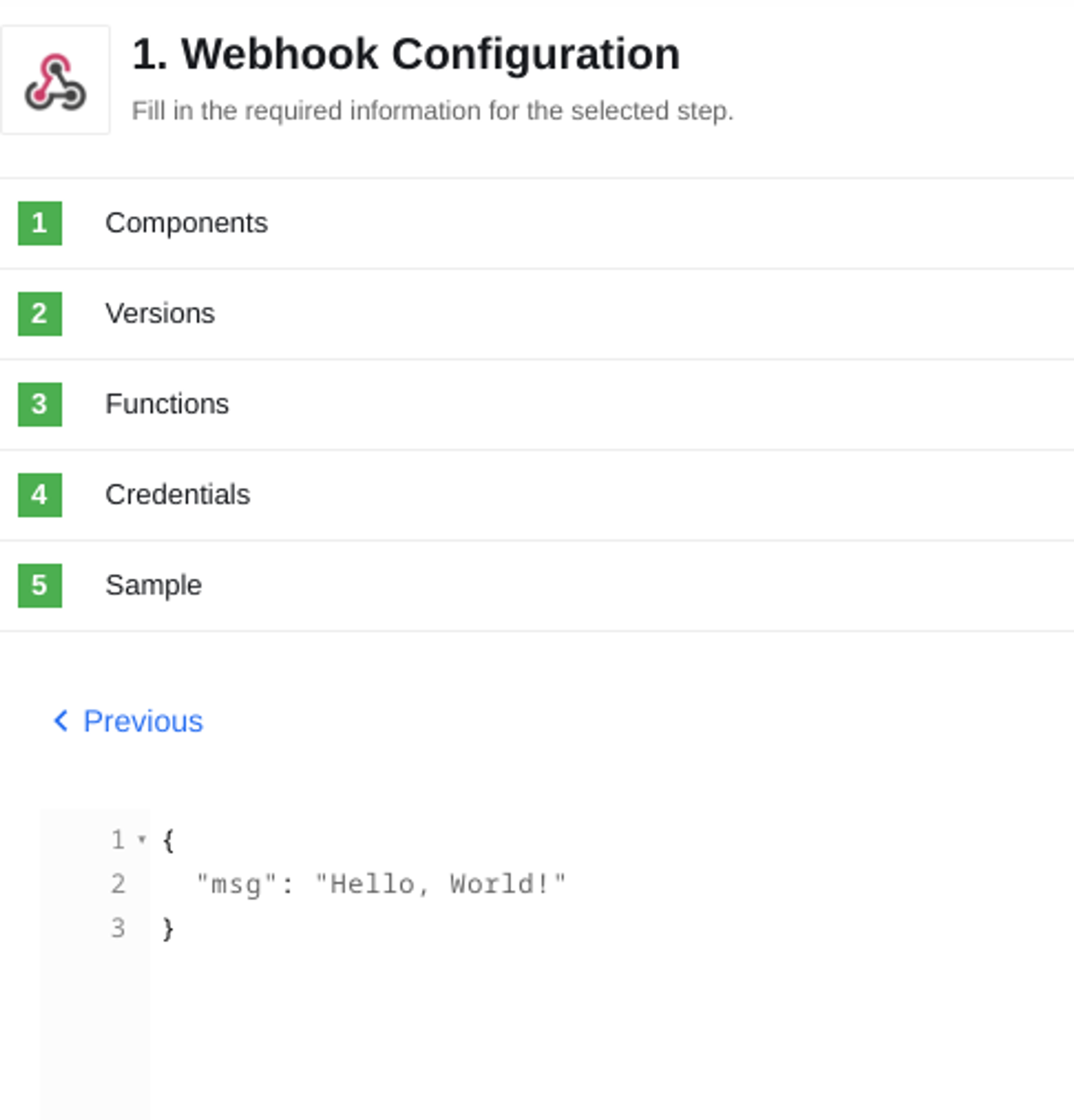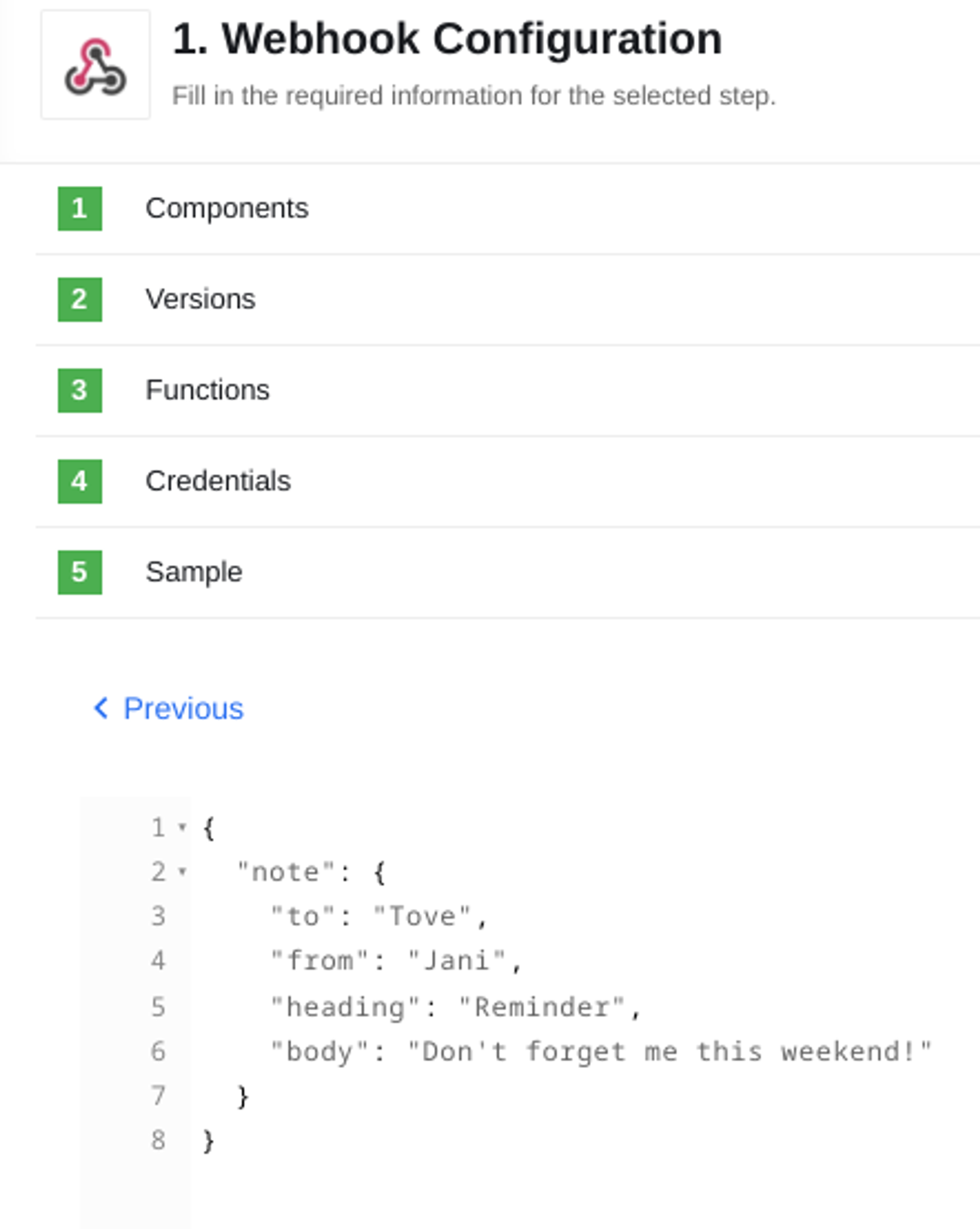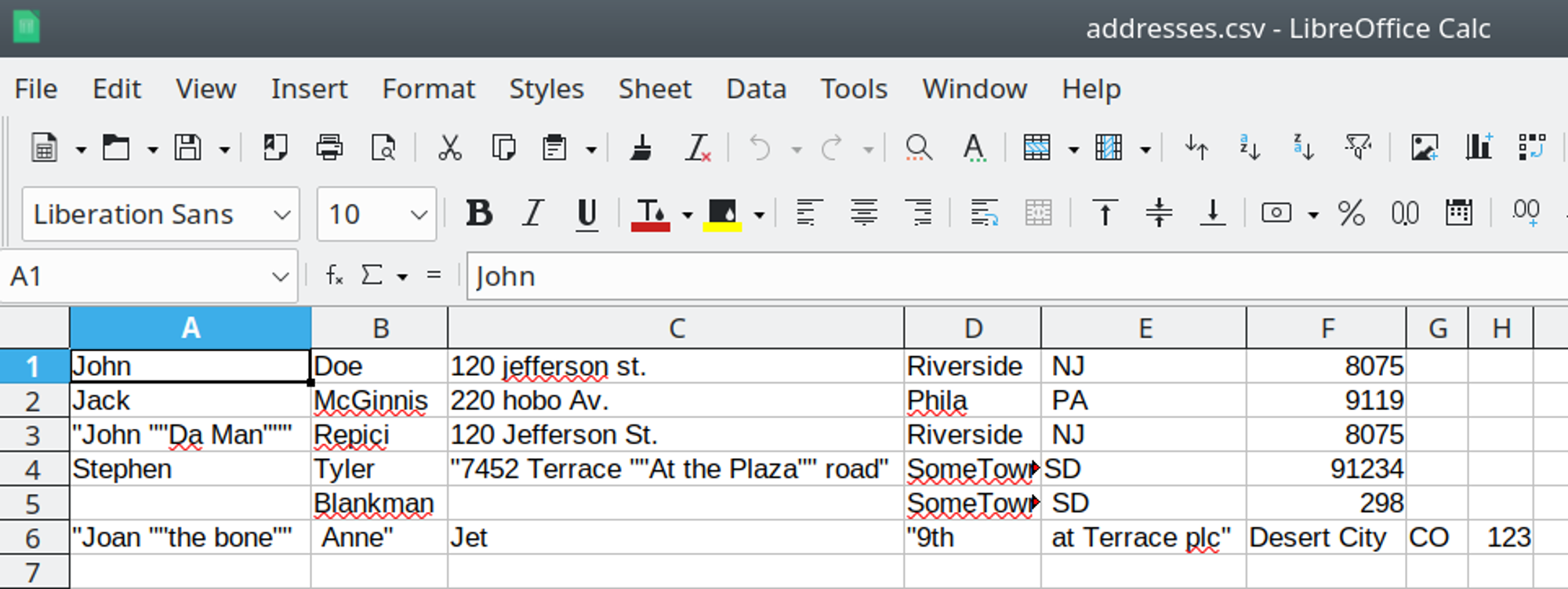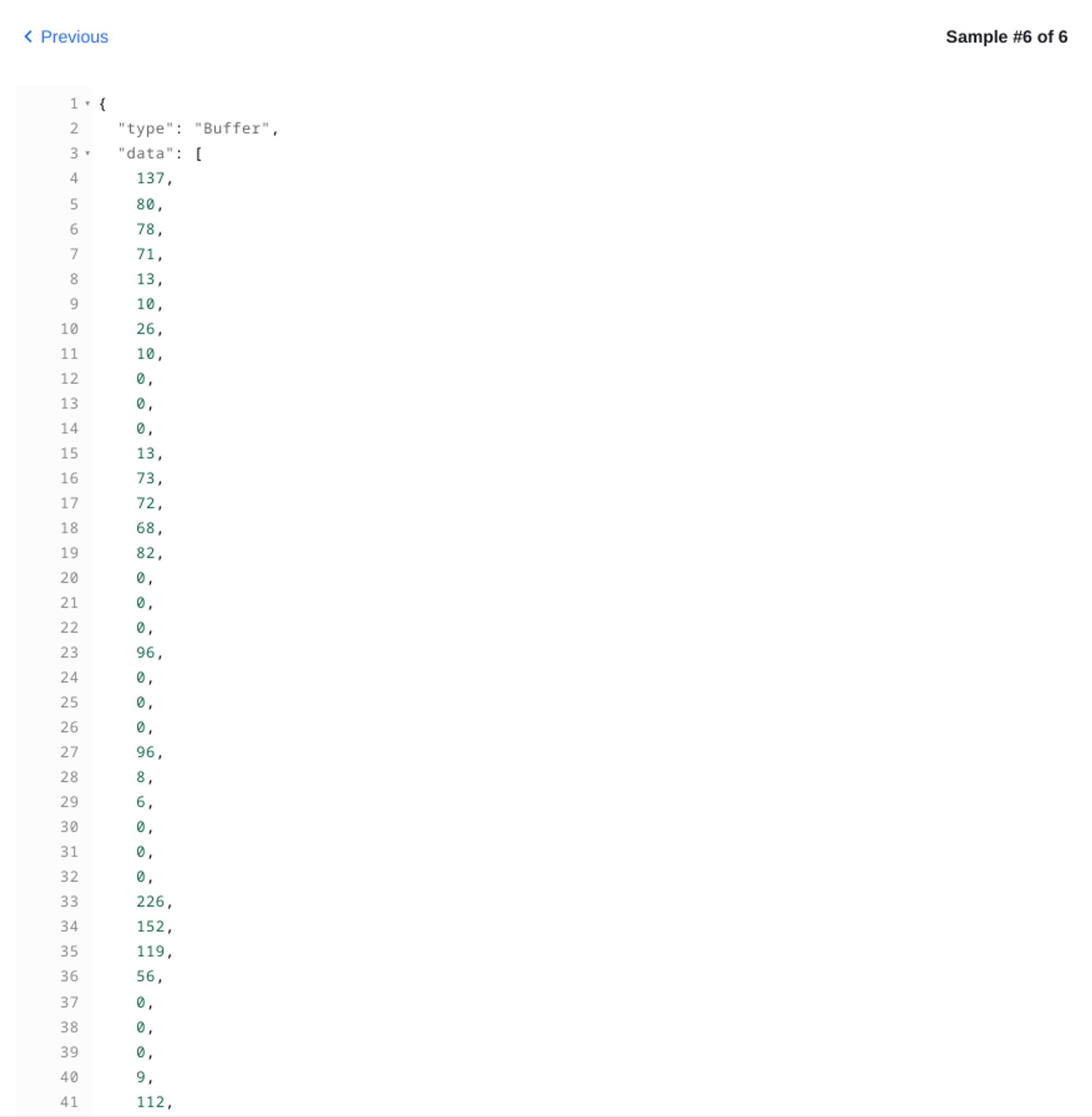Webhook component
Table of Contents
Description
An open source component for sending and receiving WebHooks on AVA.
Technical Notes
The technical notes page gives some technical details about Webhook component like changelog.
Credentials
The Webhook component supports the following authorisation types:
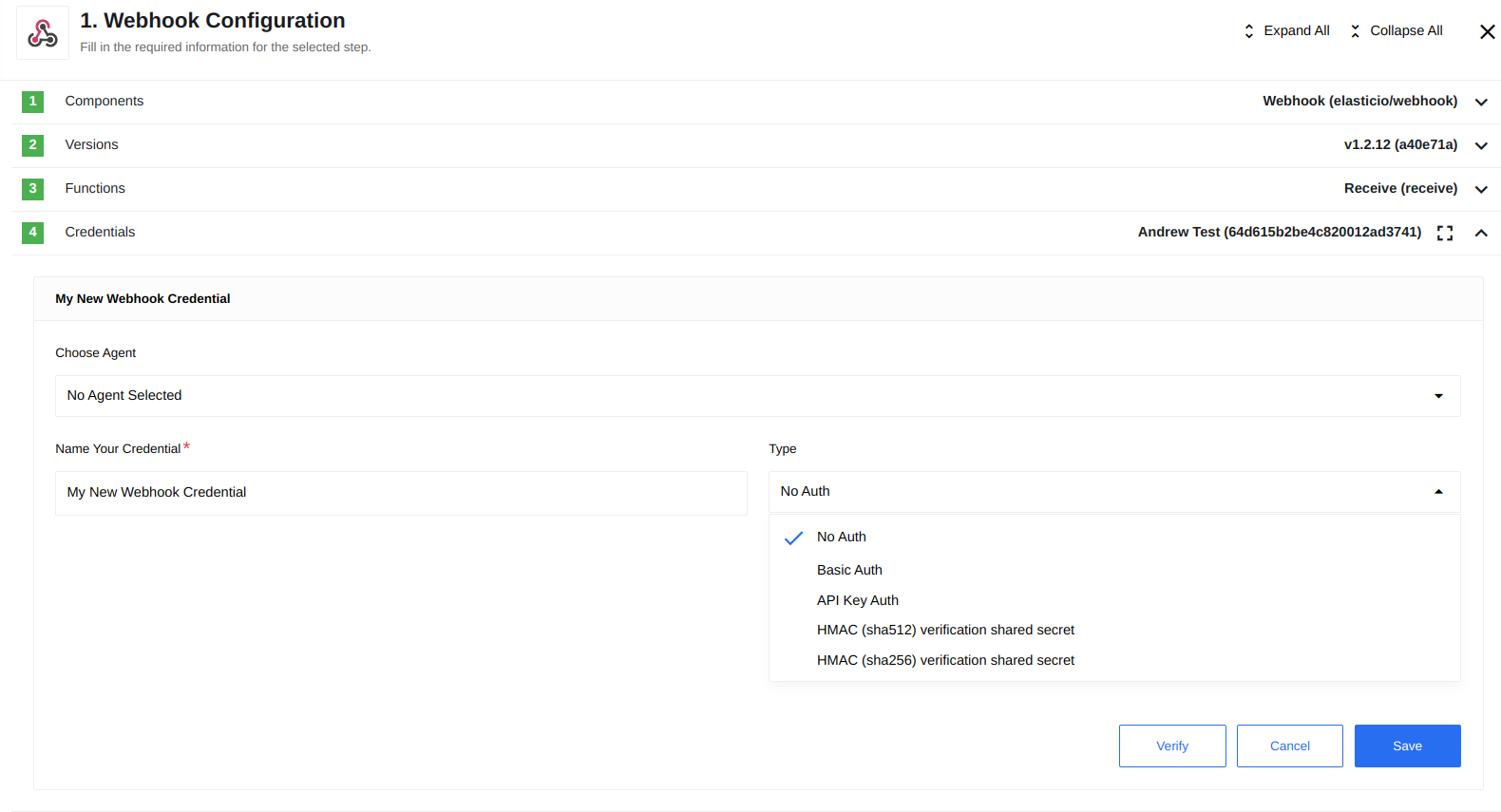
- No Auth - Use this method to interact with any open REST API.
- Basic Auth - Utilize this method to provide login credentials. This method includes the following fields:
- Username - (string, required)
- Password - (string, required)
- API Key Auth - Use this method to provide an API key as part of the headers to access the resource. This method includes the following fields:
- Header Name - (string, required)
- Header Value - (string, required)
- HMAC (sha256/sha512) verification with shared secret - Use this method to verify requests using a shared secret. This method includes the following fields:
- Header Name - (string, optional, defaults to
x-eio-signature) - HMAC (sha256/sha512) verification shared secret - (string, required)
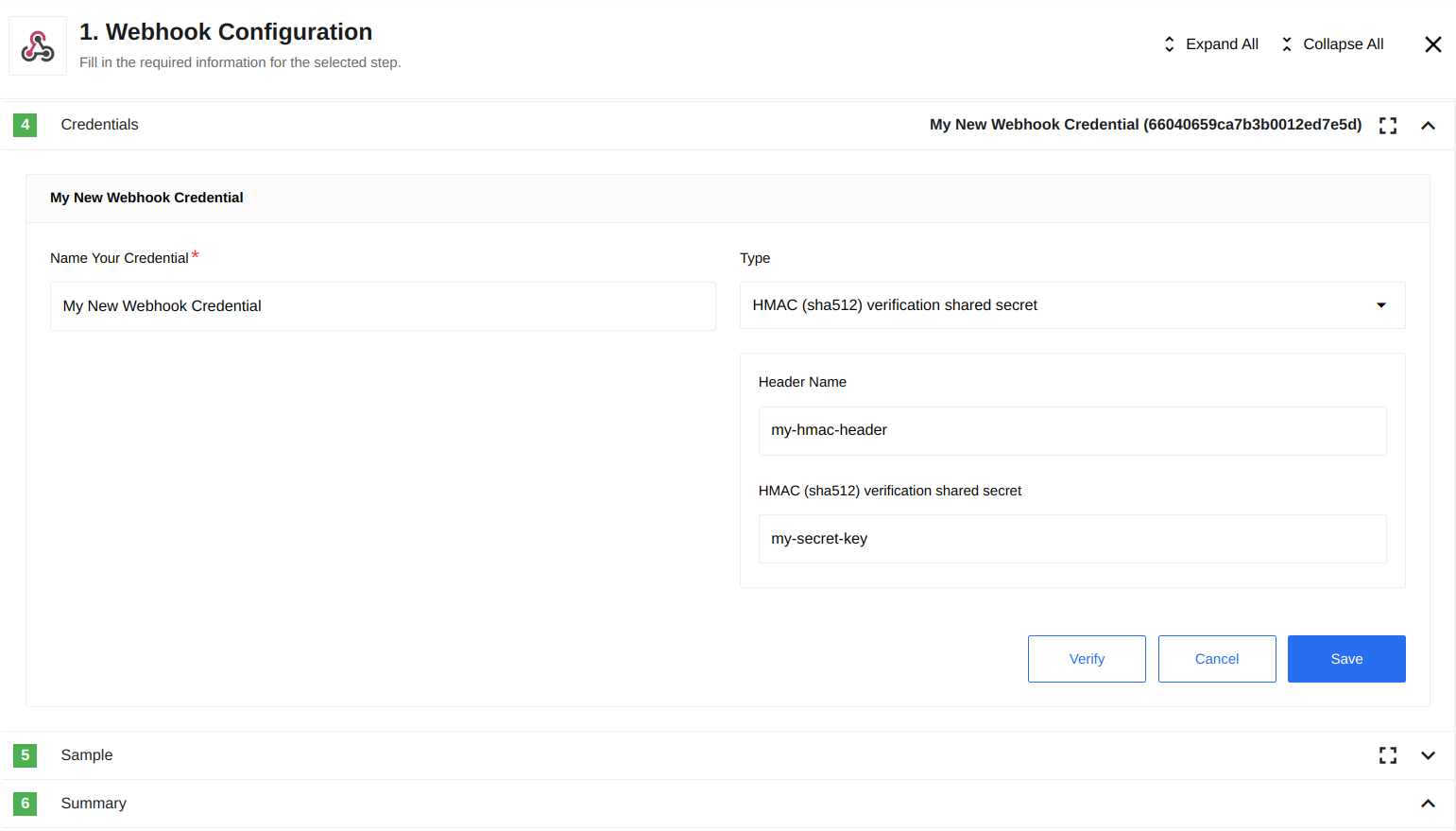
- Header Name - (string, optional, defaults to
Triggers
Receive
This is a simple webhook trigger that receives data as input and initiates the execution of the workflow.
Output Metadata
The message body emitted from the webhook will contain:
- A JSON object that was transferred using the
POSTmethod or query parameters in the case of aGETrequest. _query(object) - Contains the query parameters._headers(object) - Contains the headers of the received request._method(string,POSTorGET) - Indicates the HTTP method of the received request._url(string) - The full URL that was received.
Example:
{
"recievedBody": "recievedBody",
"_query": {},
"_headers": {
"content-type": "application/json",
"accept": "*/*",
"accept-encoding": "gzip, deflate"
},
"_method": "POST",
"_url": "/hook/5d691738cb5a286adc1e68e2"
}
Webhook Response
By default, the webhook URL will respond with the following structure:
{
"requestId": "86ad47dfbce4a8ae8a1eb505b85d8bd5",
"message": "thank you"
}
However, you can specify the exact content of the reply using the HTTP Reply component. In this case, you will receive a reply only when the message reaches the step where the HTTP Reply is used, or if an error occurs in other steps between the Webhook step and the HTTP Reply.
Supported Data Types
The Webhook component is capable of accepting various data types, with JSON being the most commonly used format due to its compatibility with the platform. However, the Webhook component can process different types of data, which will be explained in detail in this section.
Table Format
Webhooks support the table format, specifically the x-www-form-urlencoded format. In this format, tabular data is converted into a JSON object with keys and values.
Postman Request Example:
Received Webhook Payload Example:
XML Format
Webhooks also support the XML format. In this case, the result is a JSON object derived from an XML-structured document while preserving the nesting levels.
Postman Request Example:
Received Webhook Payload Example:
Binary File Format
Additionally, webhooks support binary file formats for data reception. These files can include JSON, XML, CSV, as well as pictures in PNG and JPG formats, among others. It is crucial to ensure that the file extension matches the content format within the binary file. Otherwise, an error may occur during sending or the file content may not be properly detected if the extension is missing.
JSON Example:
XML Example:
CSV Example:
Pictures Example:
Pictures are received as a sequence of bytes using the Buffer object.
By supporting these various data types, the Webhook component provides flexibility in processing data according to specific requirements and use cases.
Known Limitations
- Currently, the component supports the following HTTP methods:
POSTandGET. - When using a
POSTrequest, onlyJSONorXMLdata can be transferred to the workflow; other types, such as text or files, are not supported. XMLdata will be automatically converted toJSONformat.- The base path of the URL begins with the keyword
hookfollowed by the flow ID, for example,/hook/678119de28021e00129641fe. You can append the desired path only after this base path, such as/hook/678119de28021e00129641fe/sales/orders.

